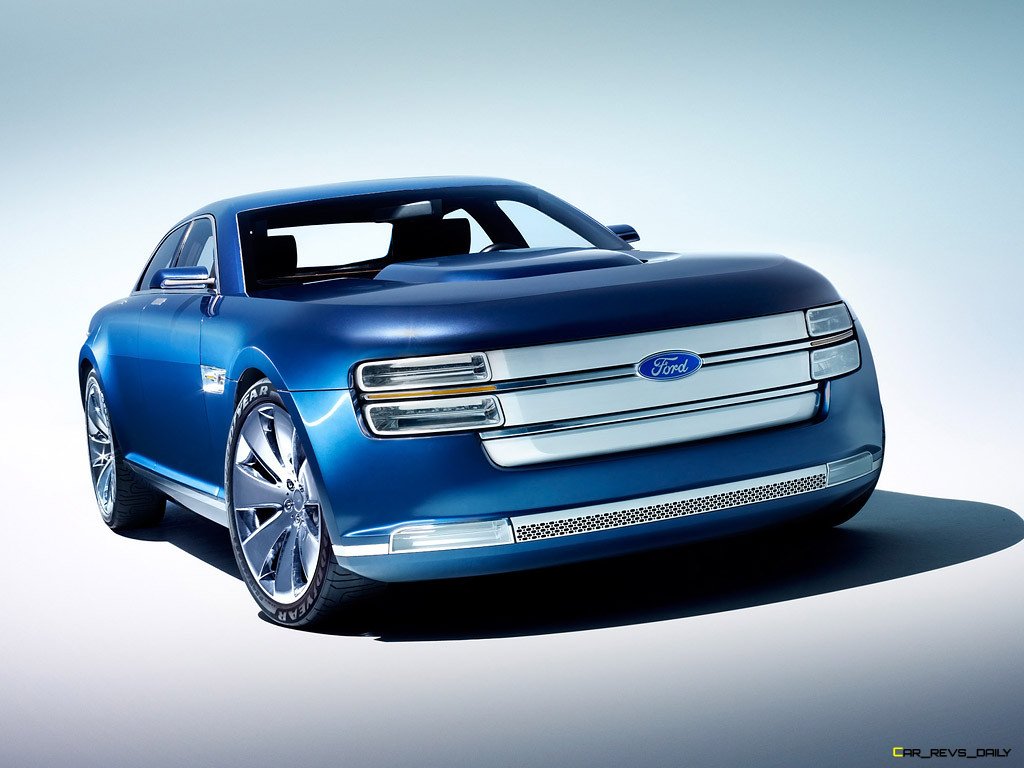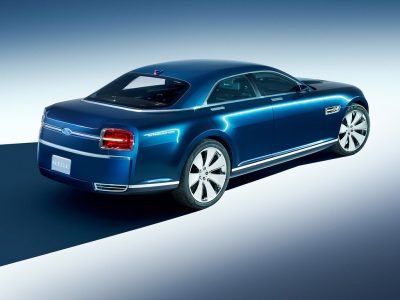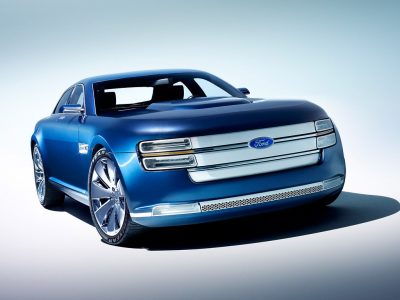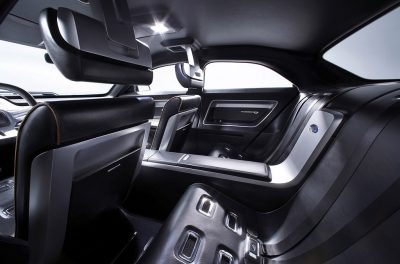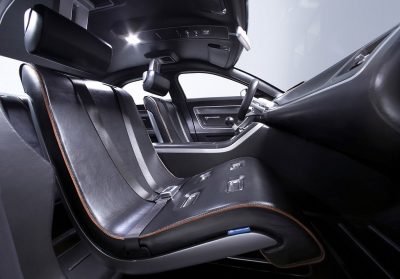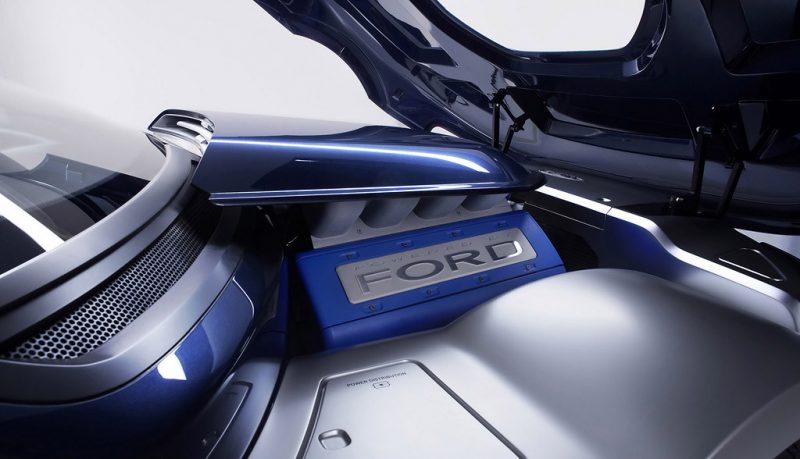Intercepting trends are a big challenge for automakers, especially in an age where the market is rapidly evolving and changing. As mentioned in our prior Facebook post, we wanted to take a look at the Blue Oval (after a brief detour to make up for our absence last week) and we wanted to find out whatever happened to the Ford Interceptor concept? Did it have a chance of making production, does it still have a strong influence in current Ford products, and what happened to it?
Purposeful styling and substance added charm to Interceptor
When the Ford Interceptor appeared, it marked a very interesting styling direction for Ford. Based on the Ford Mustang but having influences from the Ford Galaxie, the Interceptor boldly highlighted its length, with prominent front and rear overhangs. The sedan also featured a high belt line, and the strong shoulders and other elements help make the Interceptor appear it was ready to pounce at a moment’s notice. We also like the shaker hood which further enhances the muscular theme. With the Dodge Charger just rolling onto the scene, it was obvious that Ford had that model in its crosshairs with this concept.
The Interceptor was also a classic example of how the right paint color can make a big difference in a show car, with Ford adorning it in a sharp shade of blue. This particular shade of blue helped the chrome front grille bars and some of the other touches pop on this concept. One item that we’re still scratching our heads about are the supposed “squircles” that help make up some of the graphics inside and out. We like making up words as much as the next guy, but leave that task to the professionals at Merriam and Webster Ford.
Attitude and materials highlighted Interceptor cabin
The interior of the Interceptor adopted a sleek and very modern suit of clothes. Unlike other concepts that we covered, this interior was all for show, and it was obvious that this would be a one time application. Splashes of black leather are nicely accented with pieces of metal trim, and the four bucket seats themselves make prominent use of the squircle theme. The odd shapes also make an appearance in other parts of the interior including the instrument cluster.
Highlights here include retractable headrests that actually come from the roof when the concept was parked, and the audio controls were removable allowing occupants to stow them away from prying eyes. For some interesting reason, the climate controls also shared this ability, though we’re not sure how the black market on climate systems is to justify such a thing.
Cammer V8 ups the excitement…at slow speeds
Power for this concept came from a 5.0 liter “Cammer” V8 which was used in the FRC500 racecar. An extensively upgraded version of the 4.6 liter V8 that powered Mustang models of the period, the engine promised impressive levels of muscle even though Ford never revealed exactly how much power it was making. A six speed manual transmission helps channel power to the rear wheels, and like the Imperial concept we covered prior, the Interceptor was actually functional, albeit at slow speeds. The concept was even driven by major publications, but Ford execs of the time limited things to 2nd gear only (3rd and beyond was verboten.)
While that’s a shame considering that the Interceptor is supposed to be a vividly muscular car, show car grade construction does put flash, and style ahead of having the ability to go beyond the confines of second gear when out on the open road.
What happened to it?
Unlike the first two concepts we covered here, the Interceptor concept has no real discernible legacy in current automotive offerings. Instead, it played its hand in older Ford models, with some of its basic design DNA being used for the fifth generation Taurus (an emergency renaming of the slow selling Five Hundred sedan.) While this particular iteration of Taurus did benefit from this welcome infusion of DNA, it continued to limp along until the sixth generation model (which was recently axed) was introduced a short time later. The Interceptor also ironically has the first generation Ford Fusion to thank for its styling, with the basic front fascia design being traced to that model (which debuted ahead of the Interceptor.)
After its time on the show circuit ended, the car was driven by publications after its time on the show circuit was done. However, the trail appears to go ice cold after that, with the Interceptor not making any further public appearances since. Like the Imperial, the Interceptor appeared on the scene just as the financial crisis was going into full gear, and as such, its chances for formal production perhaps went up in smoke when Ford was forced to cut costs.
As for its whereabouts, we have reached out to Ford reps for an answer, and if we hear back from the company, we will update this particular section accordingly.

Carl Malek has been an automotive journalist for over 10 years. First starting out as a freelance photographer before making the transition to writing during college, his work has appeared on numerous automotive forums as well as websites such as Autoshopper.com.
Carl is also a big fan of British vehicles with the bulk of his devotion going to the Morgan Motor Company as well as offerings from Lotus, MG, and Caterham. When he is not writing about automobiles, Carl enjoys spending time with his family and friends in the Metro Detroit area, as well as spending time with his adorable pets.

